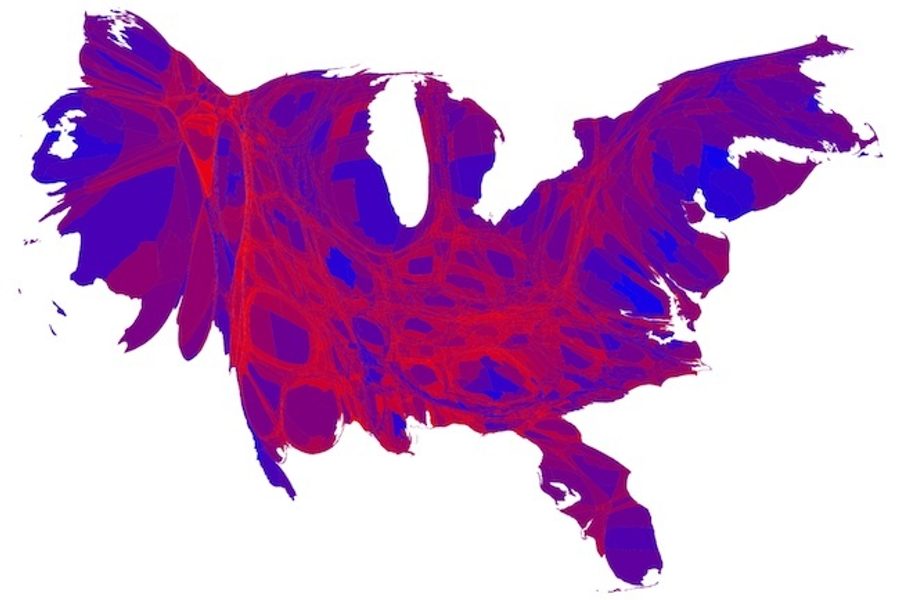All Ye Progressives, Take Heart
The Grand Old Party will eventually be the Dead Old Party: the inexorable logic of numbers.
Marilyn Katz

Progressives — and pretty much most sane people — are understandably in a funk about the recent victories of those who think that it’s women’s bodies, not guns, that should be controlled by federal regulation. Yet, while these are painful times, it is in fact the Republicans who should suffer long-term depression.
About the same time the gun reform legislation went down to defeat, in mid-April, the National Republican Caucus met. Their goal: To understand their loss in 2012 in order to forge a winning national strategy for 2016.
It was a fractious meeting. Some blamed their November loss on the party’s litmus test and narrow line, while others held the opposite position, thinking the party’s problem was its lack of ideological purity. In the end they seemed to arrive at a general consensus: Their message was fine. They only needed to communicate it better. Nice try, but Republicans, will need far more than a communications strategy to change the fate of their party. The GOP does not face a crisis of faction or message, but an existential one. Fundamentally, unless they can change not only their line but their stripes, the Republicans are doomed by the inexorable logic of numbers.
The benighted Republican leadership — and most political commentators as well — describe us as a nation divided, evenly and forever, between red and blue states. However, we are not. While a superficial reading of the maps of the November 2012 shows the nation as a patchwork quilt of red and blue, if you look further will find something more interesting. Rather than a nation of red states and blue states, we are a nation of blue states and ever-larger blue cities in states that are only red for the moment. In fact, of the nation’s 285 cities with populations above 100,000, Obama failed to capture only four—Phoenix, Oklahoma City, Fort Worth and Salt Lake City.
This should not come as a total surprise. America’s cities and their suburbs, from New York City to Birmingham, Ala., have always been more progressive than their rural counterparts. What has made them ever more so is their increasing diversity as growing populations of racial and ethnic “minorities” (who will make up the majority of Americans by 2043), young people and educated people settle in urban areas seeking the opportunities that abound.
Despite a skewed political system that gives great voting weight to our rural bastions, we are an urban nation. Today an estimated 84 percent of Americans live in cities, up from an estimated 79 percent only a decade ago. Our nation’s metropolises produce 85 percent of U.S. exports and virtually all new patents, contain the nation’s cultural, educational and healthcare institutions, and are home to 89 percent of working-age people with post-secondary degrees. For the young, born in the city or beyond, for immigrants, for minorities, for the educated, urban areas are where opportunity is and will be found.
And our nation is becoming, and will continue to become, ever more urban.
While Rob Richie of the Center for Voting and Democracy and others worry that the nation’s urbanization is a threat to Democrats’ ability to win congressional races and control state houses, he is mistaking a snapshot for an epic film. Rural America is emptying out. Those who live there, for better or for worse, are the old, the less educated, and the long-term under- and unemployed. Whereas metropolitan areas experienced growth of more than 12 percent over the last decade, the rural population barely grew. This trend will continue, with the rural population suffering even greater attrition as older residents die and younger residents leave to find the education and jobs they need to sustain themselves in a global economy. And that means an ever growing urban, progressive vote that will become unbeatable in statewide and national elections that are decided by popular vote or today’s Electoral College.
That is not to say that in the interim Republicans can’t do great damage. They can. They can make present life more difficult by attempting to deny women control of their bodies and not simply the short-sighted belief that laws should control what women do with their bodies but, heaven forbid, never control how the gun industry markets its weapons. They deny young, the minorities, the immigrants the investments in infrastructure, education, health care and housing that make opportunity possible and life sustainable — a denial that threatens the very future of America.
Republicans can try to delay the inevitable as they tried to do in the last two elections. They can gerrymander districts or attempt to suppress voter turnout or screw with the Electoral College. But these are stopgap and ultimately futile measures. As countless numbers of deluded rulers before them have discovered, demographics are destiny.








